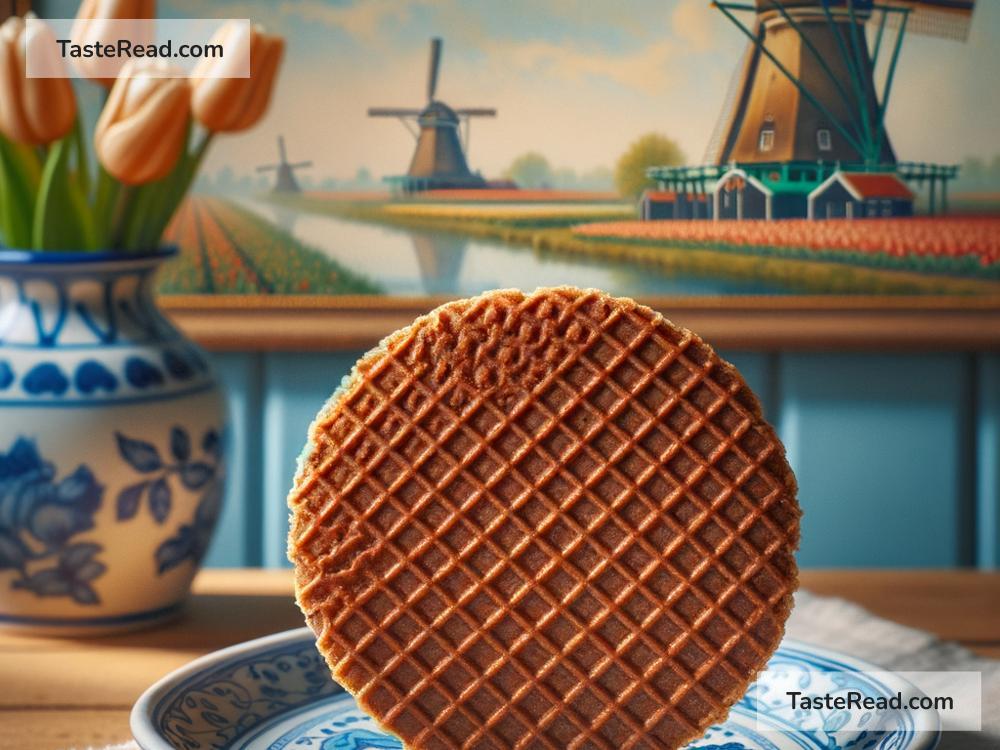Title: The Sweet Journey of the Dutch Stroopwafel: From Local Delicacy to Global Snack
The humble stroopwafel, a simple yet enchanting Dutch treat, has evolved from a regional specialty of the Netherlands to a beloved snack enjoyed by people all across the globe. This delightful concoction comprises two thin layers of baked dough, with a rich filling of caramel-like syrup nestled in between. But how did this traditional Dutch snack manage to capture the hearts (and taste buds) of snack lovers worldwide? Let’s dive into the sweet journey of the stroopwafel from its origins to becoming a global snack phenomenon.
Origins in Gouda
The story of the stroopwafel dates back to the late 18th century in the city of Gouda, famed not only for its cheese but also as the birthplace of the stroopwafel. Originally conceived as a way to make use of leftover bakery crumbs, bakers would sweeten these crumbs with syrup, and press them between hot irons to create the first stroopwafels. These early versions were a hit among the local population, offering a delicious treat that was both economical and satisfying.
A Dutch Favorite
For many years, the stroopwafel remained a relatively well-kept secret confined to the Netherlands. Dutch bakers perfected the recipe over time, creating the perfectly crisp waffle cookies with a gooey syrup center we know and love today. Traditionally served atop a steaming hot cup of tea or coffee — which helps to soften the syrup making it even more irresistible — the stroopwafel became an integral part of Dutch snacking culture.
Going Global
The globalization of the stroopwafel didn’t happen overnight. Its journey from local Dutch markets to the shelves of stores around the world is a testament to the power of cultural exchange and globalization. With the rise of global travel and the internet, more and more people were introduced to this Dutch delicacy. Tourists returning from the Netherlands brought tales of this unique snack, spurring interest and demand in their home countries.
Moreover, Dutch expatriates and entrepreneurs abroad saw an opportunity to bring a piece of their home culture to new lands, setting up stroopwafel bakeries and stalls around the world. International food markets and festivals also played a crucial role, exposing diverse audiences to the delights of the stroopwafel.
A Modern Twist
As the stroopwafel made its way onto the global snack scene, it began to evolve. Today, you can find a variety of flavors and adaptations, from honey or chocolate-filled stroopwafels to gluten-free and vegan versions catering to different dietary needs and preferences. Such innovations have made the stroopwafel even more accessible and appealing to a broader audience.
The Stroopwafel Today
Now, the stroopwafel is not just a snack enjoyed over coffee in the Netherlands; it’s a global phenomenon. You can find stroopwafels in cafes and supermarkets from the U.S. to Asia, often accompanied by the story of their Dutch origins. Some airlines even serve them as in-flight snacks, offering a sweet taste of Dutch culture at 30,000 feet. The stroopwafel has even made its way into the hearts of foodies and culinary innovators, featured in various desserts and dishes around the world.
Conclusion
The journey of the stroopwafel from a local Dutch treat to a global snack is a remarkable story of culinary travel and adaptation. It underscores how a simple, delicious idea can transcend cultural boundaries, bringing people together through the universal language of food. The stroopwafel’s success lies not just in its delightful taste but also in its ability to adapt and appeal to different palates and preferences across the globe.
As the world becomes increasingly interconnected, the future of the stroopwafel looks sweeter than ever. Whether enjoyed in its traditional form or as part of a modern culinary creation, the stroopwafel continues to enchant snack lovers everywhere, proving that sometimes, the simplest pleasures can have the most profound impact.


